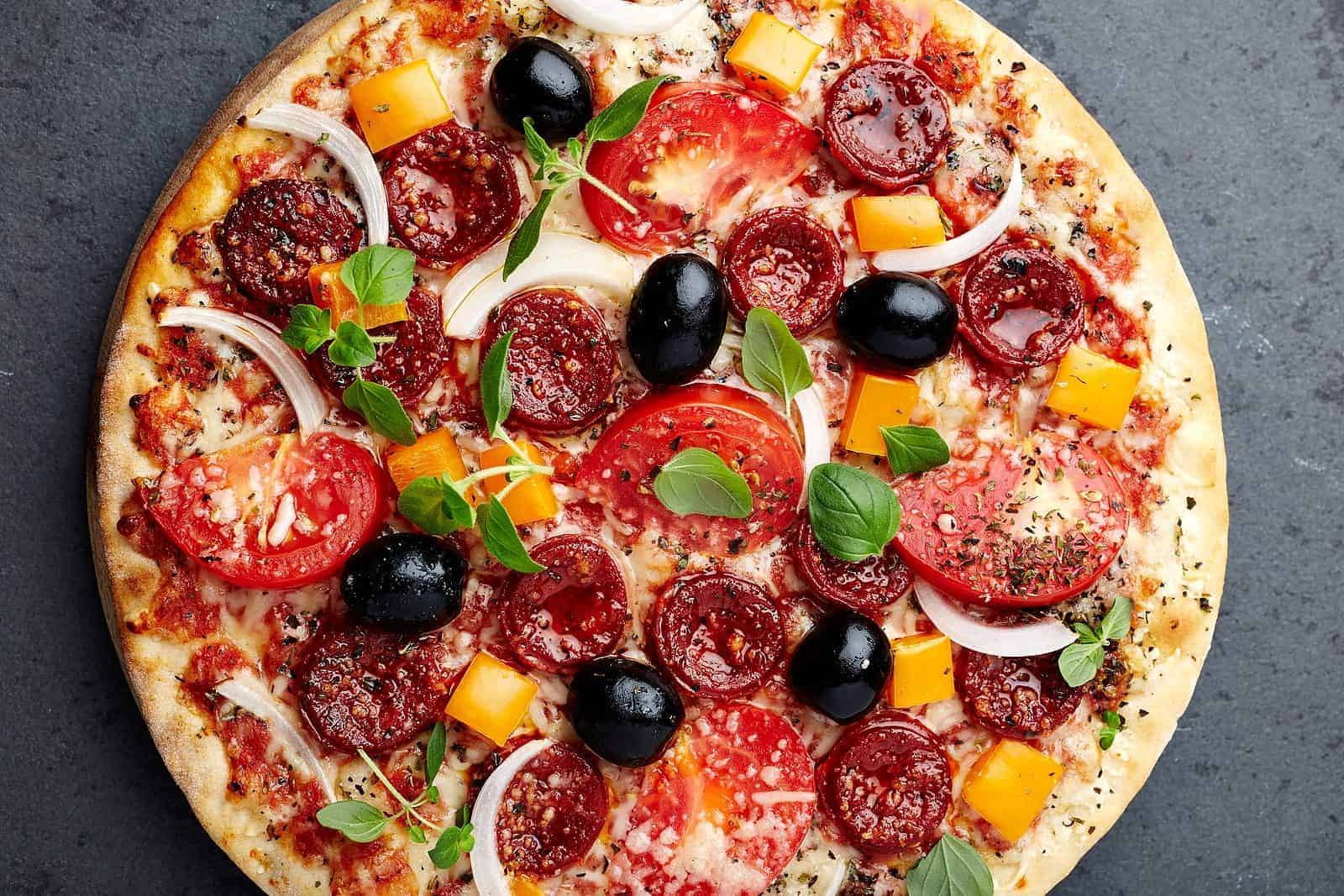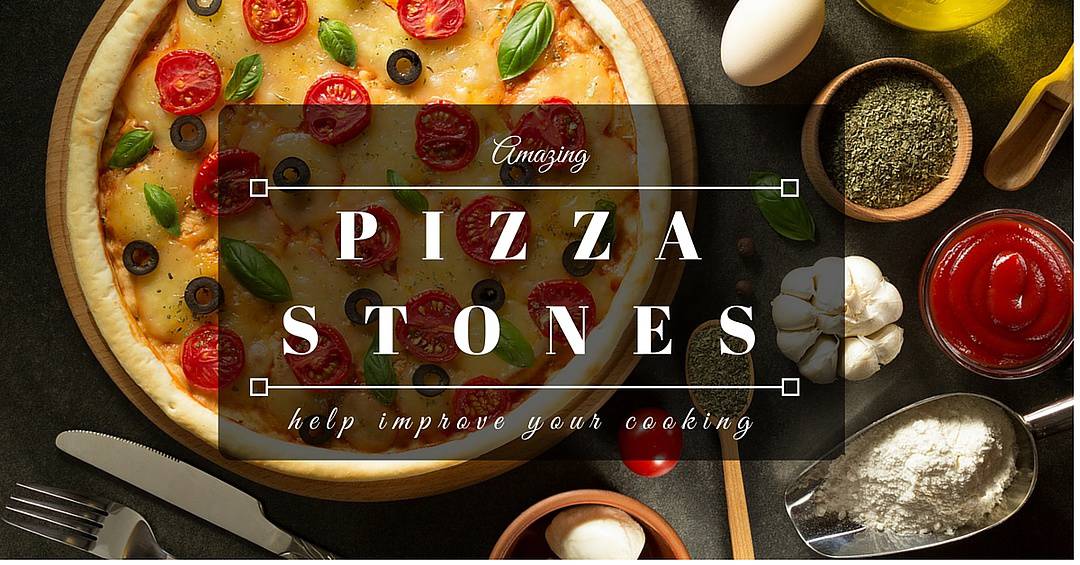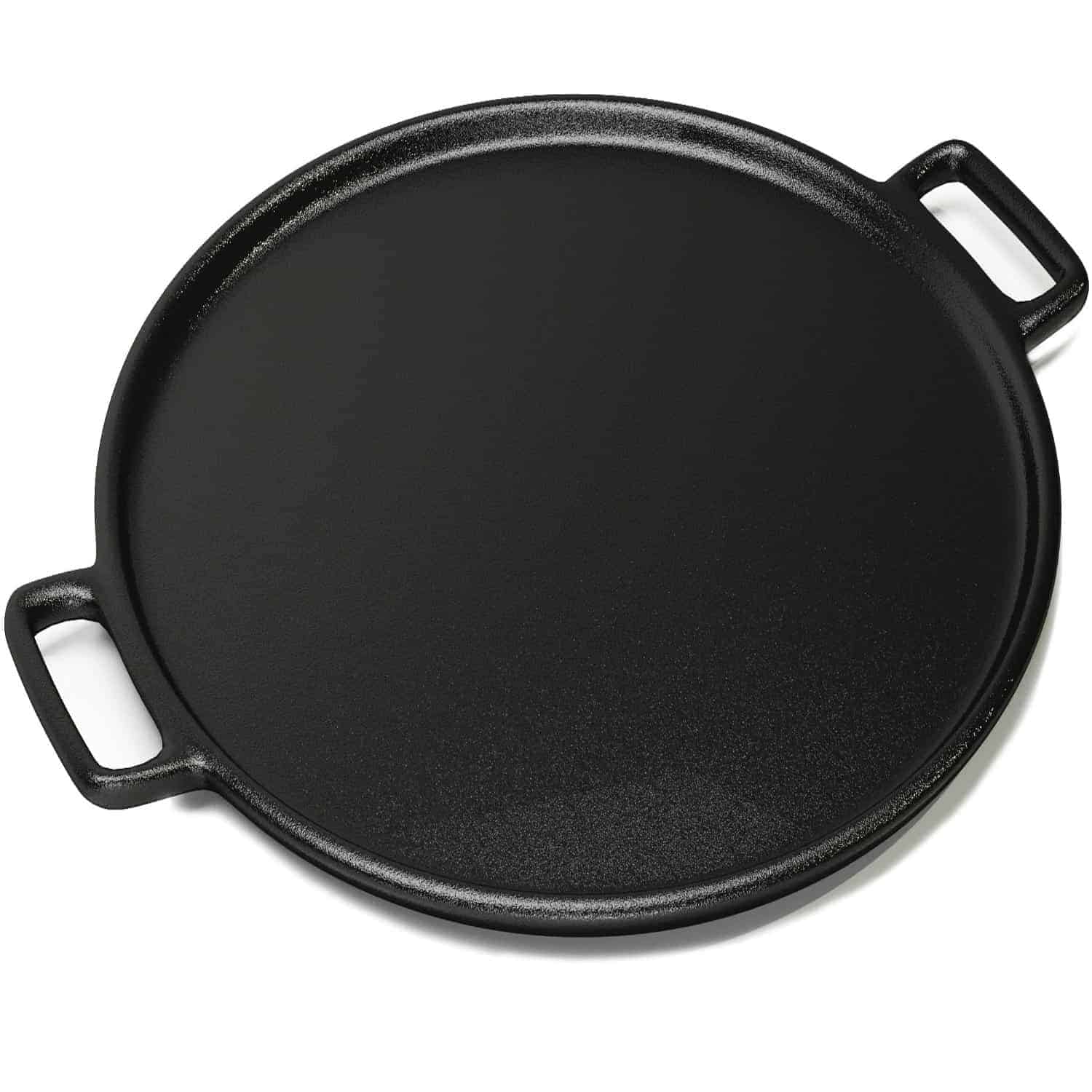Few things you can make in your kitchen are as fun to tackle, especially in a family setting, as pizza. Even young children can help you pick toppings and put them on the pizza.
Everyone involved in the process can have fun making dinner and will get to enjoy the results. The problem, however, is that a lot of homemade pizzas miss the mark.
If you ever wondered why that might be, it's worth considering whether you're using the right tool for the job.
Many people use simple metal sheets for cooking their pizzas. Clever home cooks know that the trick to making great pizza is to use the best pizza stone available.
Let's take a look at some issues to keep an eye out for. I'll then review some of the better options on the market when you're shopping for a pizza stone.
More...
Rank | Image | Product Name | Score | |
|---|---|---|---|---|
1
| 95 | |||
2
| 97 | |||
3
|
92
/100
| |||
4
|
85
/100
| |||
5
|
81
/100
|
The Magic of the Pizza Stone
A pizza stone achieves impressive results by properly distributing heat. The stone itself heats up. As it warms, it transmits heat more evenly through the pizza than most types of baking sheets do. This ensures that three things happen:
- The dough rises evenly.
- The dough is cooked the whole way through.
- The bottom of the crust is crunchy while everything else is soft.
Still not sold on the types of results you can get using a pizza stone? Check out the end of this video about how to make pizza and see the kind of restaurant-quality pizza you can produce.
Types of Pizza Stones

Not all pizza stones are created equal. In fact, not all pizza stones are even made from stone! Most pizza stones are made using at least one of the following materials:
- Clay
- Cast iron
- Steel
- Ceramic
You'll typically find pizza stones in round, square or rectangular shapes. Thanks to the relatively uniform heat distribution of the materials, the shape should have little impact on the baking time or quality of pizza itself.
You may be surprised to find that no one goes to a quarry and makes an actual pizza stone from a real cut of rock. As a practical matter, real stone often has imperfections that can lead to cracking during the baking process.
Therefore, almost all available pizza stones are made from other materials. The clay pizza stone is the closest thing to a true stone available. Ceramic stones are a close second.
Where things can get a little tricky is when we get into the metal options. It's especially important to note that using a cast-iron pizza pan carries with it everything you expect when you use cast iron. That means that it imparts the iron taste to pizza, and it also tends to provide a somewhat crispier crust.
Steel options typically minimize the iron taste and still yield a crispy crust. Their primary advantage, however, is that they tend to be easier to clean.
Manufacturers also like to mix and match materials. For example, many nonstick options use a mixture of modern and glazed ceramics that encase a steel core. None of this makes a radical difference.
Unless you're shooting for the specific taste and texture imparted by cast iron, your family likely will never notice. I do notice the difference, however, when I have to clean the stone after a meal is done!
Size Matters
An important thing to keep in mind is that the size of a stone can create cooking problems. For example, an especially wide stone can consume so much space in your oven or grill that proper convection is inhibited.
The thickness of a stone can also be an issue. If you're looking for the best pizza stone for grilling, you'll likely want one that's a little bit thinner in order to not require excessive heating time.
Features

Pizza stones have features?
Yes, they do. In fact, some have fairly advanced features, such as built-in thermometers that will allow you to monitor the temperature of the stone.
Many, especially the cast-iron and steel varieties, also have handles for easier carrying. You'll still need a spatula or a paddle to remove the pizza from the stone.
Don't DIY
The internet is littered with life hacks that don't actually make your life any simpler. One of the most common ones floating around in the world of pizza baking is the garden tile pizza stone hack.
As you might imagine, the idea is to save money by using a garden tile as a pizza stone.The problem, though, is that garden tiles were not designed for this specific use.
They're thin, and that can mess with expected cooking times. The primary benefit of utilizing a pizza stone arises from not using thick baking sheets, and this do-it-yourself hack undoes all that.
Garden tiles are often brittle. Unless you look forward to cleaning shards of tile, dough and toppings out of your oven, it's best to stick with what the professionals prefer to use.
Pizza Stone Reviews
Rank | Image | Product Name | Score | |
|---|---|---|---|---|
1
|
95
/100
| |||
2
| 97 | |||
3
|
85
/100
| |||
4
|
81
/100
| |||
5
|
78
/100
|
*Below, you'll find our more detailed reviews, but you can also click the links above to see current prices or read customer reviews on Amazon.
Easy cleanup is a big selling point for most cooking products, and this pizza stone from Heritage is a great choice for anyone who wants that process to be as simple as possible. This glazed ceramic model provides an excellent nonstick surface.
You can readily slide your pizza off when it's done. Although not oversold as a specific feature, it also achieves surprisingly fast baking times. I found that it seemed to heat up a lot faster than other stones.
On the downside, its 15-inch, circular design all but eliminates the ability to make a square pizza.
For lovers of the circular pie, though, it's large enough to produce a pizza that can feed a whole family.
Editor's Rating: 95/100
Pros
- Cleanup is super easy
- Removing a pie from the stone is a breeze
- The stone offers fast cooking time
- It holds up surprisingly well to temperatures above 600 degrees Fahrenheit.
- It imparts no tastes or odors to the pizza.
Cons
- Slippery surface can cause a pizza to get away.
- It's nearly impossible to use for square pies.
- The surface is stickier than would be expected for a glazed ceramic pan.
- It doesn't always produce a very crispy crust.
I would be remiss to not include at least one cast-iron option on this list. This pan from Home-Complete includes a heavy design, but it also has the handles required to make it easier to move around.
As you might imagine, it imparts the signature taste you'd expect from any cookware item made from cast iron.
The manufacturer backs it with a guarantee, and the price point is fairly low compared to other pizza stone options.
Cleanup is difficult with any cast-iron pan, and it demands regular seasoning to work well for your pizzas.
The benefit is that the taste it yields will get better as the pan ages. It requires preheating, and you absolutely will have to oil it.
Its 14-inch, circular form isn't ideal for making square pies. Although it warms up slower than other options I've reviewed, it also retains heat longer.
Editor's Rating: 92/100
Pros
- Very even heat distribution
- Convenient handles
- Durable build
- Great for cooks who want cast-iron taste
- Versatile and can be used to grill many foods
Cons
- Difficult cleanup
- Requires regular seasoning
- Must be oiled
- Has a slow initial preheat time
- Not dishwasher safe
A round pizza stone can present its own set of problems, especially when you want to make a pie for a large gathering.
This rectangular stone from Pizzacraft addresses that issue. Like many other ceramic stones on the market, it features cordierite, a silicate that includes bits of iron.
It doesn't impart a strong iron taste, so it's not an appropriate substitute if you're looking for that cast-iron flavor.
The rectangular design makes it suitable for other purposes, too. If you're feeling the need to make bread or quesadillas, you can fire up your oven and go with this stone.
This Pizzacraft stone is a little bigger than reported on the labeling, so beware if you have a small oven.Where it really shines is heat distribution.
If you have an oven with terrible convection, this stone will serve you well.
Editor's Rating: 85/100
Pros
- Great for making big, rectangular pizzas
- Easily used for other baking purposes
- Excellent heat distribution
- Very low price point
- Large enough for doing a circular pizza
Cons
- Reported size is slightly under actual size
- Cleanup can be a bit tough
- Can retain water after washing
- Extremely heavy;, not convenient
If you're like me and you prefer a larger pie, especially a New York-style pizza, this is likely the stone you're looking for.
It's a circular design, but at 16 inches, it can accommodate smaller square pizzas too. This model from Old Stone Oven features a heavy construction.
It can, however, become a space eater, so if you have a smaller oven, you may not find it ideal. Heat distribution for the stone is very even.
It's a clay design that's supposed to feature a specially engineered core for better heat spreading. I didn't find it to be any more magical than other stones, but it did seem to do the job well.
The price is mid-range, but the performance is competitive with more expensive models. It's a good stone that many clay enthusiasts are likely to prefer.
Editor's Rating: 81/100
Pros
- Proper size for making your own extra-large pizza at home
- Good heat distribution
- Fairly easy cleanup for a clay model
Cons
- Heavy
- Not suitable for larger square pizzas
- Doesn't always yield an ideal crispiness to the crust
- Stone a bit larger than the published dimensions
- Heats somewhat slowly
This brilliant pizza stone boasts the only pizza stone to use Thermarite. So, what is Thermarite. It is made from high density Cordierite that has the ability to heat up to over 2000F. This then absorbs more moisture from the dough producing the most perfect crusty pizza base.
The combination of the intense heat and heat transfer makes sure your pizza cooks evenly. The pizza stone can be used in all ovens, grills and bricks ovens.
The stone itself is high quality and built to last. It come completely ready to use with no reasoning or conditioning needed. Just pull it straight out of the box.
The company provide the best customer service, with a follow up care which is amazing. There are clear instruction on the care and clean the pizza stone and a great recipe book
Overall I can’t fault this product, the service and the quality
Editor's Rating: 78/100
Pros
- The stone makes a perfect crisp, evenly-cooked crust
- Top quality product and value for money
- Best after care support and customer service
Conclusion
The Heritage Ceramic model barely beats out the Cast Iron option from Home-Complete. Although hardcore cast-iron enthusiasts who demand a crispy crust may differ, I ultimately found the easy cleanup permitted by the Heritage stone to be a top selling point.
It holds up well to high heat and can produce a crispy crust once you get comfortable using it at higher temperatures. The fast cooking time is beneficial, and it's durable, too.
Also love Best Crispy Crust
Have you benefited from this article? Do you have your own suggestion for what might be the best pizza stone available? Share this article through social media if you found it helpful!
You can also give your feedback in the comments section. Tell me what you think about the pizza stone options available on the market.
Or if you want to enjoy other kinds of recipes, read about best popcorn kernels.









